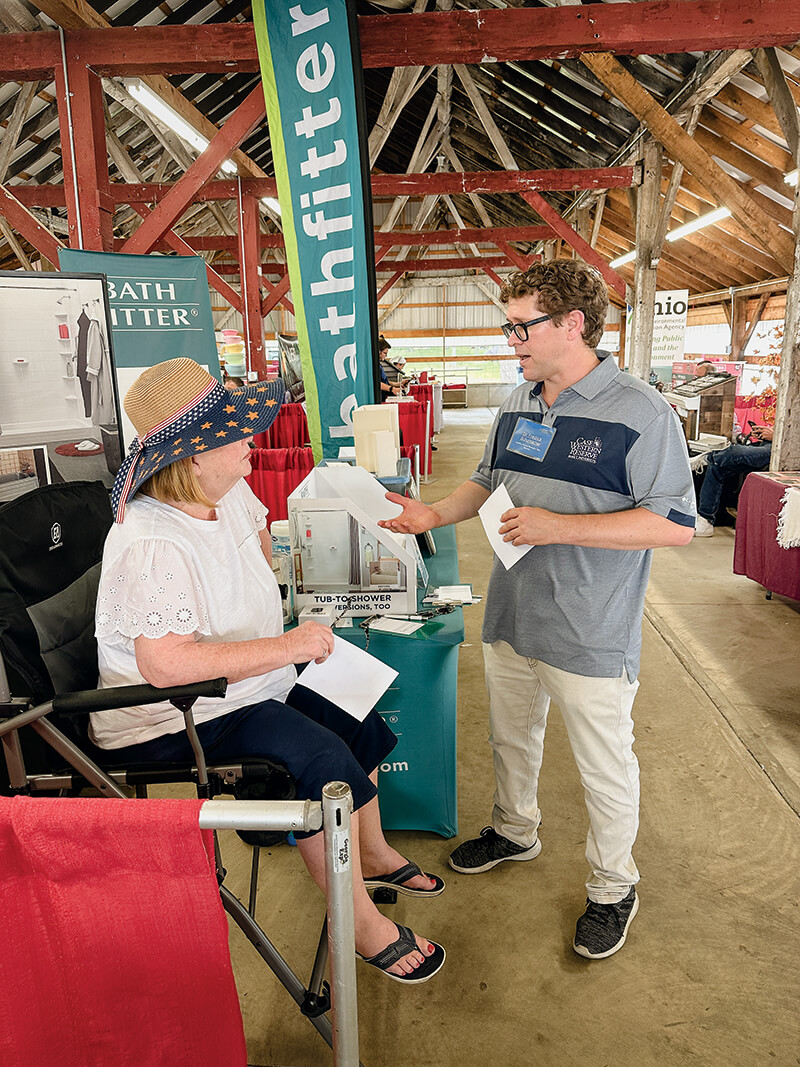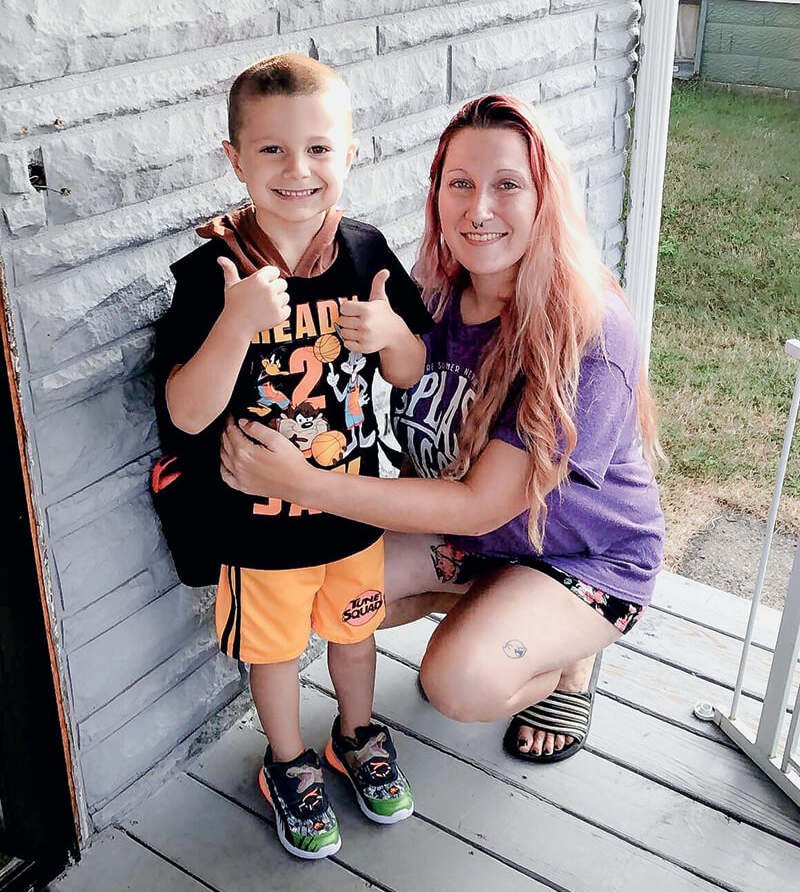lens
Monitoring Health After Fiery Train Derailment
Researchers study potential long-term impacts of hazardous chemical release
 PHOTO: Patty ZamoraAt a recent county fair, CWRU’s
PHOTO: Patty ZamoraAt a recent county fair, CWRU’s Fred Schumacher talked with a potential participant about the study he leads in the wake of the train derailment in East Palestine, Ohio, to monitor the health of area residents potentially exposed to hazardous chemicals.
On Feb. 3, just before 9 p.m., Ashley McCollum heard a loud boom that would change her life.
She ran to the front of her East Palestine, Ohio, home and saw nothing. “So I went to the back,” she said, “and as soon as I opened the door, it looked like the whole town was on fire.”
For more than eight years, she’d lived just a block from a stretch of railroad tracks that was now a disaster site after a Norfolk Southern Railroad freight train with 150 cars derailed and a fire erupted. Among the cars that careened off the tracks were 11 carrying hazardous materials, according to the National Transportation Safety Board.
Soon area residents experienced nosebleeds; throat, skin and eye irritations; vomiting; and difficulty breathing. And they grew increasingly concerned about the unknown and potentially long-term health effects they and their children might face.
Just a month after the disaster, researchers at Case Western Reserve and the affiliated Case Comprehensive Cancer Center were already discussing how to help residents. Gary Schwartz, MD, the new cancer center director, even began working on a project grant before he arrived in April.
 PHOTO: Courtesy of Ashley McCollumAshley McCollum and her son, Zayne Young, happily marked the first day of school in fall 2022.
PHOTO: Courtesy of Ashley McCollumAshley McCollum and her son, Zayne Young, happily marked the first day of school in fall 2022.
“We’ve got a lot of expertise and great people, but what I think really sets us apart is we know how to engage with communities” said Fred Schumacher, PhD, an associate professor at the university’s School of Medicine, who co-leads the center’s cancer-prevention program and heads the East Palestine study.
The researchers are working on projects that include extensive outreach and community collaborations. The goal: to reach people where they are and in environments they trust.
They plan to monitor participating adults in East Palestine and surrounding communities for an initial two years, with plans for follow-ups. They also expect to assess how study participants’ possible exposure to the toxic chemicals—including vinyl chloride and butyl acrylate—might affect them and their risks for cancers or metabolic diseases that could result from DNA damage.
The research team will periodically take hair, nail, saliva and blood samples, looking for more than the expected level of DNA damage that occurs throughout an average lifetime or indications that the expected DNA repair mechanism isn’t working.
“We are trying to come up with new ways to shift the paradigm and detect diseases like cancer at an earlier stage,” said Schumacher (GRS ’03, public health; GRS ’06, epidemiology and biostatistics).
— Gary Schwartz, MD, director of the Case Comprehensive Cancer Center and vice dean for oncology at Case Western Reserve’s School of Medicine
To explain the study and enroll area residents, the team is attending community meetings, county fairs and other events in Ohio and Pennsylvania, which is about 40 miles away from the derailment site.
“I can’t go into my house without experiencing issues [such as a heavy chest] that are alarming,” said McCollum, 33, who has two young children and moved into her mother’s nearby home the night of the derailment and later into a hotel. “My daughter told me, ‘Mom, when I look at my classroom, everyone’s eyes are red, and kids keep going to the nurse with bloody noses.’”
McCollum plans to sign up for the study. So does Rachel Jack, 45, who lives about six miles from the accident site. “We have five kids, and they were begging us to move,” she said. “They’re like, ‘We need to get out of here!’ And we’re like, ‘Well, what are we going to do?’ We really don’t have a lot of options, you know, we own the property.”
The study has received initial funding of $75,000 from the cancer center and the Clinical and Translational Science Collaborative of Northern Ohio, whose members include CWRU and area hospitals. It also has received $25,000 from the university and is seeking federal funding.
“We’re focused on getting the study off the ground,” Schumacher said, “and showing the community that we’re going to be here for the long term.”





